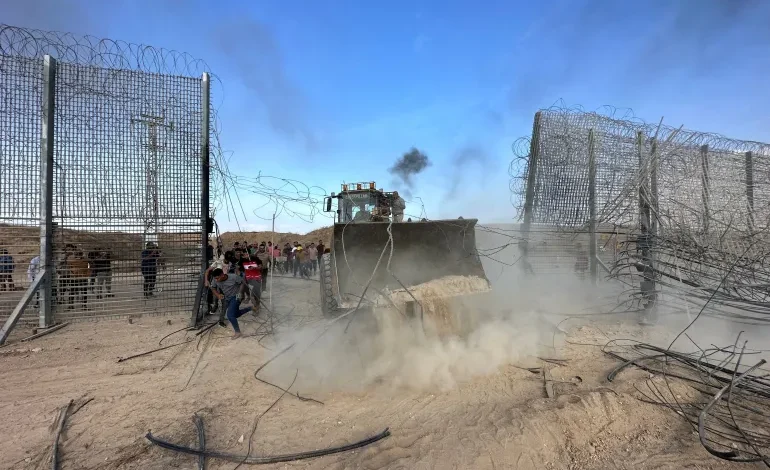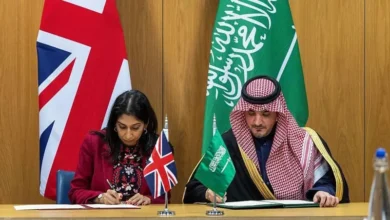Watching the watchdogs: Babies and truth die together in Israel-Palestine
Rami G Khouri

Rami G Khouri
When US President Joe Biden publicly expressed his outrage at Hamas militants who invaded southern Israel and beheaded babies they had killed at Kfar Aza kibbutz last weekend, the public shock was both extensive and understandable. The gruesome news spanned the world’s media in hours.
But subsequent reports revealed that no such beheadings have been verified by any Israeli or international source – probably because they never happened. This was just one dramatic incident of false reports spreading in the public sphere via mass media to denigrate one’s foes and support one’s allies. Thousands of other false reports like this circulate daily in the media – though not necessarily so savage, or spread by such luminaries as the most powerful man on Earth, at the height of an intense conflict in Palestine and Israel that has polarised global opinion.
So, how should we assess the Biden and babies incident? What does it tell us about the dangers of media-disseminated false news and United States government attitudes to this conflict?
The beheaded babies tale originated with a report on Israel’s i24News site by reporter Nicole Zedeck, from her interview with Israeli reserve soldier David Ben Zion. Max Blumenthal and Alexander Rubinstein reported on October 11 that Ben Zion is a notorious radical leader in Israel’s West Bank settler movement. Among other things, he called on rampaging armed settlers earlier this year to wipe out the Palestinian village of Harawa, which settlers attacked and burned several times.
Media around the world quickly picked up the i24News report, and the Israeli Prime Minister’s spokesman said that babies and toddlers “with their heads decapitated” had been found at the site. CNN, among others, reported beheadings and “ISIS-style executions”. When journalists asked a spokesman for the Israeli military about the story, the reply was, “We cannot confirm but you can assume it happened.”
Within days, though, the Israeli foreign ministry and armed forces and some correspondents said there was no evidence for the beheadings, and the White House said that Biden was quoting press reports he’d read. It seemed clear by October 12 that no evidence existed to confirm the baby beheadings story. It was fake news, planted by an ideological warrior to stoke tensions in the heat of battle.
But the damage was done, and wildfire-like social media spreading of fake news had influenced millions of people around the world – mostly by intensifying existing ideological or cultural fault lines and confrontations.
Biden is a fierce, lifelong supporter of Israel who enthusiastically joined this battle; from the first moment, he promised and sent Israel all the assistance it needed. The babies story fed into a narrative that is common in US foreign policy – that Washington supports good guys with high national values, and fights bad guys whose actions are brutal, even savage, and must be eradicated.
The US since World War II has always needed a foreign adversary it could hold up as a threat to Western democratic values, and who must be fought militarily if necessary. That adversary has changed regularly, starting with the Soviet Union and communism, then Gamal Abdel Nasser and Arab nationalism, and finally in recent years Saddam Hussein, the Taliban, Iran, Syria, Hezbollah, al-Qaeda and ISIL (ISIS).
Israel has been Washington’s closest ally in all these cases, and any party that Israel feels is a threat automatically becomes an enemy of the US. Hamas is the latest member of this group, which the US under Biden is now committed to degrade or destroy. Using the media to taint Hamas’s character, values and actions is one weapon in this battle, even if the media tools are fabricated, and the enemy’s bad motives are merely assumed, rather than proven.Using false reports in the media is an inexpensive and effective way, in the short run at least, of lauding Western values while trash-talking and then militarily confronting the evil enemy of the day. That enemy in recent decades has usually come from the Arab or Islamic region.
Such actions usually result in active warfare, as in Afghanistan and Iraq, or surrogate warfare by supporting Israel against real or imagined threats from Hezbollah, Iran and Hamas. The battles that follow always inflict immense pain on civilians, mostly, and destruction of national infrastructure, as witnessed in Lebanon, Iraq, Syria and Gaza most recently.
When the American president engages in this sort of warfare by media manipulation, he signals that Washington cares neither for the wellbeing of Palestinian civilians nor the damage done to the credibility of the media around the world. Rather, Israel’s concerns are all that matters, which US policy has asserted in decades of “peace talks” as well as repeated wars.
This attitude carries over into double standards on respecting the rule of law. The US and its allies spend tens of billions of dollars supporting the right of Ukraine to defend itself and resist Russian aggression, while denying that right to resist to the Palestinians. They also seek to hold Russia accountable before the International Criminal Court, but shield Israel from ICC accountability.
The Palestine-Israel conflict now takes place in three primary battlefields: militaries on the ground, media narratives on the air, and attempts by both sides to protect their access to advocate in the public sphere, especially in higher education, public lectures, rallies and advocacy. The media plays pivotal roles in all three arenas, which is why it must be monitored more closely than ever.











